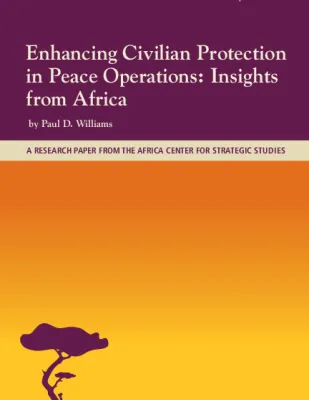"This paper proceeds in six main parts. Empirical illustrations are drawn primarily from Rwanda (1993–1994), the Democratic Republic of the Congo (DRC) (2001–present), and Sudan (2004–present) because these countries experienced both extensive international engagement and some of the most severe and sustained civilian protection challenges in Africa. For example, in Sudan and the DRC alone, nearly 35,000 civilians have been massacred in episodes of one-sided violence since 1990. Yet despite being widely regarded as catastrophic failures, the peace operations in these countries have also produced some of the most innovative examples of how protection policies might be improved in the future. After outlining the civilian protection challenge, the next section provides an overview of the origins of this agenda by summarizing the interrelated streams of thought and policy that promoted it. These were developments in international law, specifically humanitarian, criminal, and human rights law, an increasing emphasis on protection activities by a range of humanitarian agencies, the UN Security Council’s readiness to discuss issues of civilian protection and make protection a core component of its peacekeeping mandates, the willingness of a variety of regional arrangements in Africa to do the same thing, and the rise to prominence of the responsibility to protect principle. The third section discusses the four main challenges the civilian protection agenda poses for peacekeepers on the ground: establishing practical definitions and expectations that can guide operational decisions, operational and legal problems associated with working in Africa’s war zones, the lack of appropriate resources, and political challenges stemming largely from insufficient commitment by powerful states and organizations. The fourth and fifth sections examine how civilian protection policies might be enhanced. Specifically, the former discusses how peace operations must systematically collect and analyze information about what kinds of protection will be offered to whom, from what (threats), and through which agents. The latter section analyzes the available political and military options. As far as military action is concerned, two scenarios are discussed: situations where atrocities occur in a country where peacekeepers are already present, and cases where atrocities take place in the absence of peacekeepers. The paper then examines the crucial issue of how military power at the strategic, operational, and tactical levels can be harnessed to enhance civilian protection today and help deter atrocities tomorrow. The concluding section offers 10 general policy recommendations for more effective policies within organizations that have made civilian protection part of their remit: ◆ deterrence is the objective, so strengthen global norms ◆ devise clear operational concepts and strengthen international consensus around them ◆ be realistic and manage expectations ◆ invest in excellent leaders for peace operations ◆ invest in peacekeepers ◆ invest in intelligence capabilities ◆ invest in reflection ◆ be prepared to coerce perpetrators ◆ keep humanitarian military intervention on the table ◆ don’t give up on security sector reform"
Publication year
2021
Abstract
ACCESS
File
Document
Access
“Open” means that the resource is available to view, but please check the weblink for restrictions on use. “Restricted” means that the resource is not openly accessible to all, but you can purchase a copy, or your organisation might have an institutional subscription.
Source
Africa Center for Strategic Studies Research Paper No. 1
FURTHER INFORMATION
Keywords
Language(s)
